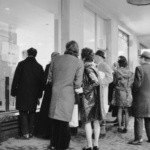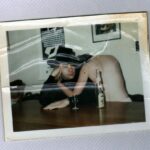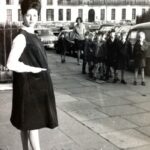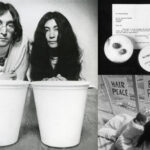The London Arts Group incorporates many fields of artistic activity. Dealers in the paintings and sculpture of internationally known artists, the London Arts Group is also one of the largest distributors of original prints in the world, their prints ranging from 15th-century Old Master examples to selections of 19th and 20th-century modern masters such as Renoir, Picasso, and Chagall. They are the publishers of the graphic works of many contemporary artists, including Appel, Alechinsky, Calder, Ernst, and Matta.
The London Arts Group visited universities, art centers, and museums throughout the United States, Canada, and Europe, their exhibitions usually lasting two to three days during which time people may buy pieces directly out of the show.
London Arts operated as an affiliate of charitable organizations who wish to raise money by holding a benefit art exhibition. The London Arts Group also acts as an advisor for major corporate collections; represented are Atlantic Richfield, New York, Smith Barney, and Michigan Bell Telephone.
Through such a wide range of activity, London Arts has furthered a new marketing principle whereby fine art is made available to the public.
London Arts Group publishing company assisting in producing limited edition art works for many internationally recognized artists including; Yaacov Agam, Karel Appel, Arman, Romare Bearden, Gene Davis, Don Eddy, Alberto Giacometti, Lester Johnson, Alex Katz, Richard Lindner, Roberto Matta, Lowell Nesbitt, Robert Rauschenberg, Harry Bertoia, Victor Vasarely and Larry Zox.
London Arts Inc. occupied a large portion of the third floor of the Fisher Building, located in the New Center area of Detroit during the 1960s – 1990s.
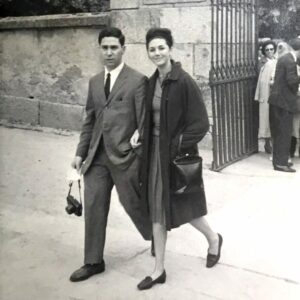
“Eugene took back a few prints for friends as presents, and they said ‘How come you are buying expensive presents like this when you’re so broke?’ Eugene explained that they’d only cost about three dollars. Then my brother-in-law Monis said that he knew they cost 10 dollars or more there. So he gave us 100 dollars to buy modern art when we got back, and that is how we got started.”
“Someone said ‘Why don’t you sell Bonnard prints in the foyer? It makes more sense than the reproductions and postcards they usually sell.’ So we did, and in two days, we’d exhausted all stocks. That really put us on our feet.”
timeline:
London England, 1963
- Eugene Schuster was a Fulbright Scholar exchange student
- Warburg Institute in London
- His professors included the art historian Ernst Gombricht, Anthony Blunt and Sir Karl Popper.
84 Grovesnor Street Gallery
- Barbara and Eugene met many young English artists and had print selling parties in their flat.
22 New Bond Street
In 1968 London Arts Gallery opened a modern gallery in a fashionable district of central London.
Detroit Michigan
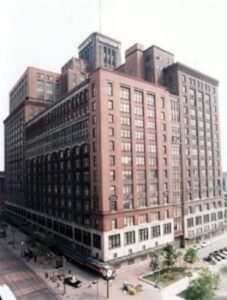
Hudsons Department Store, Woodward Ave., Detroit, Mich

The Fisher Building, New Center Area, Detroit.
London Arts Gallery, 1967-2001
